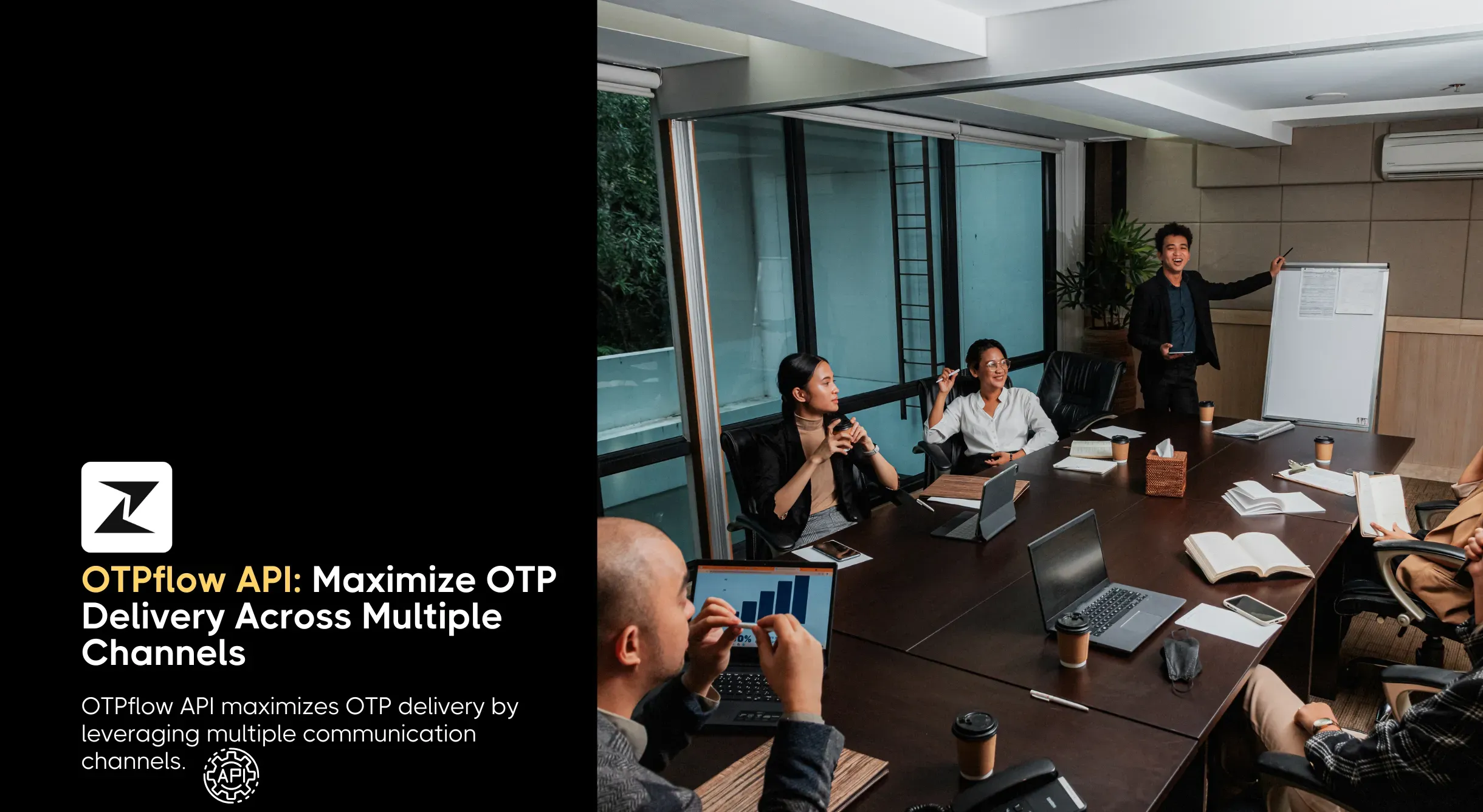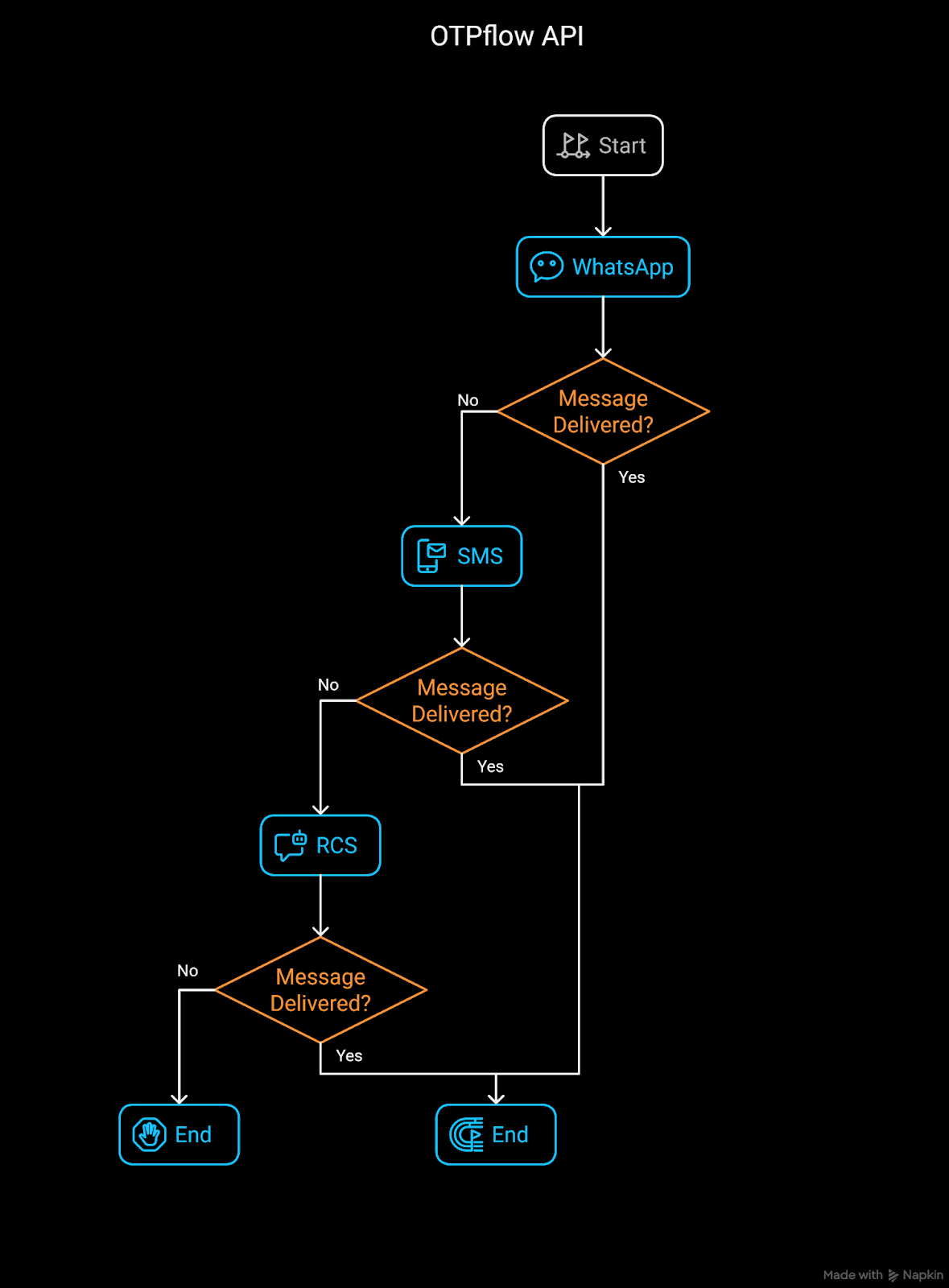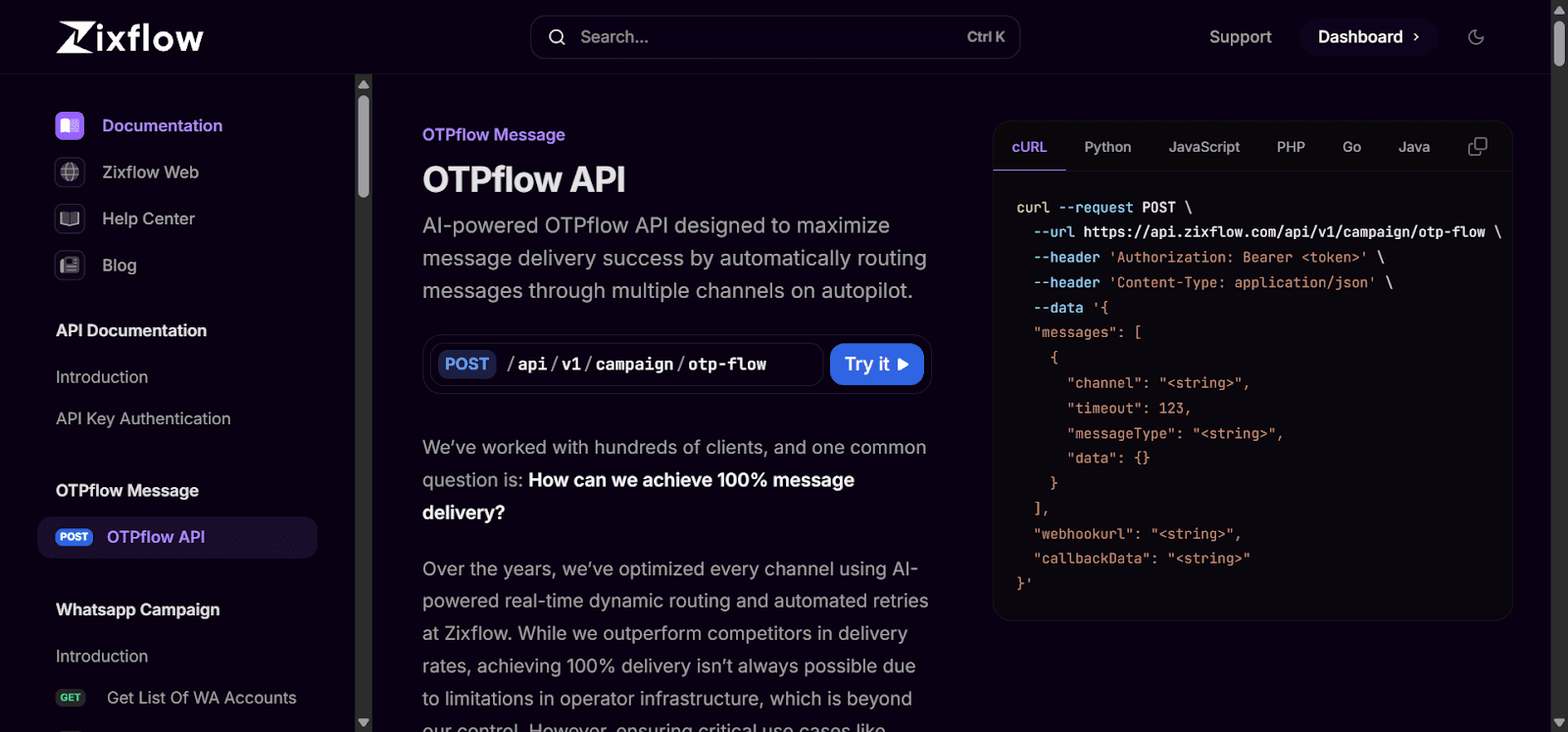OTPflow API: Maximize OTP Delivery Across Multiple Channels

These days we do everything online, whether ordering our favorite food, buying a new phone, or completing an online transaction. What is the common aspect between all of these things? Well, in order to complete the process, you need to enter an OTP.
Most of the time, there is no problem getting these OPTs on time, allowing you to finish the tasks without any hassle. However, occasionally you will run into a situation where the OTP is not delivered and you have to wait for it for quite some time.
In these situations, it could cause serious delays or waste of time, and even cause you to postpone what you were doing for a later time. Looking at this from the other angle, you will see that businesses also stand to lose a lot of customers due to the delays to OTP messages.
For this reason, we at Zixflow came up with a brilliant idea to ensure your mission-critical messages are delivered 99.9% of the time. The solution we thought of was the OTPflow API!
Having said that, let’s jump into understanding what OTPflow API is, how it can be a great way for you to achieve close to 100% deliverability, and how you can set it up for your business.
What is the OTPflow API?
The OTPflow API is a dynamic functionality that we at Zixflow have come up with and implemented within our platform to help you guarantee that your mission-critical messages are successfully delivered every time.
Using the API, you can set up a sequence of channels where our system will keep retrying the same message if it is not delivered the first time. This process will repeat itself until the message gets sent or the sequence ends.
Now, you may think, “What is so special about sending the same OTP message across different channels?”
As I mentioned at the beginning of this blog, you stand to lose valuable customers if the OTP messages are not delivered on time at the time of signing up. Additionally, the delays in OTPs can result in you losing sales as customers might not wait for too long to finish placing an order.

Here is an example of how the OTPflow API works. Suppose you want to verify the authenticity of a user’s phone number. They opted for receiving an OTP. After getting this request, the OTPflow API will trigger a flow to send the message first via SMS (or any channel you selected). If the message is sent successfully, then the flow is stopped and no further messages are sent.
If by any chance the message fails to be delivered, then the next channel (like WhatsApp or RCS) is automatically switched and the same message is sent via them. This process repeats until the message is delivered or a maximum number of attempts have been reached.
What are the benefits of using the OTPflow API?
The OTPflow API is an innovative concept that allows you to boost your deliverability. That being said, here are some of the advantages of utilizing the OTPflow API:
Higher delivery rates
Since the API consists of cycling between multiple channels, both cellular and internet-based, it greatly increases the probability that at least one of them will be successful. This fact, lets you recover the failed messages, enabling you to convert prospects more effectively.
Customizable flows
With OTPflow API, you are in control of the sequences you want to create and timeouts you want to set for the automatic triggering of messages. For instance, you can set SMS as your primary channel, then WhatsApp, and then RCS or you can put WhatsApp first, followed by RCS, and then SMS.
You can mix and match these channels based on your customer’s preferences. On top of that, to make sure the successful message is not repeated on a different channel, the system waits for a report from the operator, signaling whether it was delivered or failed. Sometimes this report can take too long to deliver and you cannot keep the customer waiting.
Here is a sample flow for better understanding:
Suppose you set up a flow that consists of sending SMS first (with a timeout window of 10s), followed by WhatsApp (with a timeout window of 10s), and then RCS (with a timeout window of 10s).
To handle this issue, you can set up custom timeouts to let the system know how long it has to wait until it repeats the message on the next channel.
Cost reductions
Sending the message across multiple channels or repeating them on the same one can skyrocket your outreach costs. However, with OTPflow API, only the messages which are failed are retried the second or the third time. This way, the cost remains controlled while significantly boosting the delivery rates.
How to access the OTPflow API?
Currently, the OTPflow API is only accessible via our platform. You can try it out by visiting our OTPflow API documentation and filling in the required fields such as bearer token, message body, webhook URL, and callback data. All of these things you can set up using Zixflow.
Once these details are filled, simply click the send button and the messages will be sent to the phone number in the sequenced manner.

You can also reach out to our support team if you need any help getting started with the OTPflow API or want help connecting it with your existing framework.
Leverage OTPflow API to reach deliverability like never before
We came up with the idea of the OTPflow API to allow businesses to resolve the deliverability crisis and give you the maximum opportunity to convert your customers.
On top of that, the AI engine automatically manages the entire flow without requiring any manual intervention from your end. You can also make it so that every time the API switches the channel, you get a notification. This way, you can inform your customers where you will be sending the message.
Try out the OTPflow API today or get in touch with us to learn more about how it can let you solve your unique message delivery problems.
